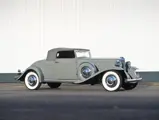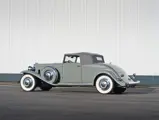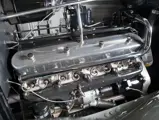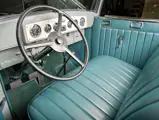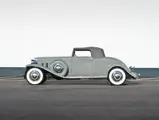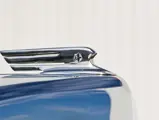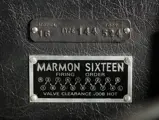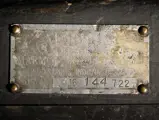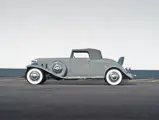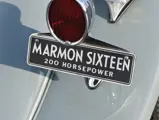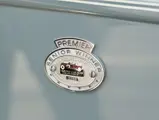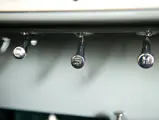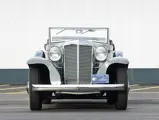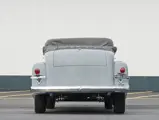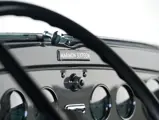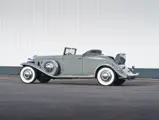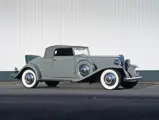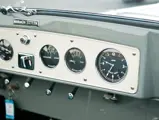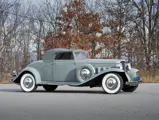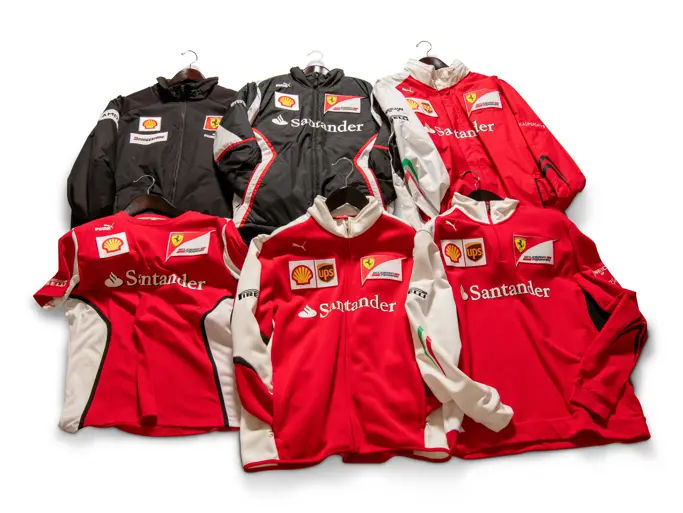Arizona 2012
1931 Marmon Sixteen Convertible Coupe by LeBaron
{{lr.item.text}}
$475,000 - $650,000 USD | Not Sold
 | Phoenix, Arizona
| Phoenix, Arizona
{{internetCurrentBid}}
{{internetTimeLeft}}

Series Sixteen. 200 bhp, 491 cu. in. OHV aluminum V-16 engine, three-speed manual transmission, solid front and live rear axles with semi-elliptic leaf springs, and four-wheel vacuum-assisted mechanical drum brakes. Wheelbase: 145"
• One of the ultimate achievements of Classic Era design and engineering
• One of eight Marmon Sixteen Convertible Coupes in existence
• Painstakingly restored; class winner, 2011 Amelia Island Concours d’Elegance
• Winner, Primary Production Class, 2000 CCCA Annual Meeting (100-point score)
• Known history from new, documented by Dyke W. Ridgley in Marmon Sixteen Roster
Howard Marmon will always be remembered as one of America’s most innovative and brilliant automotive engineers. His crowning achievement, the Sixteen, debuted to great acclaim at the Chicago Auto Salon in November 1930 and earned him a medal for outstanding achievement from the Society of Automotive Engineers. However, its arrival coincided with the economic chaos of the Great Depression. As with most other luxury carmakers, Marmon’s profits soon turned to deficits as the Depression deepened, and the Company’s finances spiraled downward.
Technically advanced and well-built, Marmon automobiles had become nearly indistinguishable from other prestige cars by the dawn of the “Roaring Twenties,” and sales were mediocre. The lack of technical innovation was an anathema to Howard Marmon, always the engineering brains of the company. So, in 1926, Marmon effectively “retired” from daily operations and began work on his masterpiece, a brilliant 16-cylinder luxury car. At its heart was a compact, all aluminum, 45-degree V-16 of 491 cubic inches. Overhead valves were pushrod-operated, a modern design two-barrel carburetor fed crossflow alloy cylinder heads, and the aluminum block had wet cylinder liners. It was so smooth in operation that a light flywheel was possible, allowing surprisingly rapid acceleration, and the compact, well-lubricated valvetrain was nearly silent, despite mechanical adjustment.
The Sixteen developed a real 200 bhp, rode a state-of-the-art chassis with a 145-inch wheelbase and was clothed in attractive Art Deco-inspired bodies. The extensive use of aluminum in both the engine and various body panels and trim resulted in a car weighing significantly less than its competition. This light weight coupled with an honest 200 bhp resulted in acceleration performance that made the Sixteen the “muscle car” of the classic era. Sixteens were the performance king, only being outpaced on top speed by the Duesenberg J.
Although LeBaron built the bodies, a father-and-son team of industrial designers penned the car’s svelte lines. Credit is conventionally given to Walter Dorwin Teague Sr., while it was his son who actually designed the Art Deco bodywork, aircraft-style instrument panel and luxurious interior. The son, Walter Dorwin Teague Jr., an MIT student at the time, was a gifted designer who went on to design some of the most influential automobiles of his era.
While magnificent, the Sixteen was not production-ready until early 1931, by which time Cadillac’s V-16 had already been on the market for over a year. Initial prices were more expensive than the equivalent Cadillac, and Cadillac had a head start, a larger client base and GM’s financial might. By 1933, in a desperate effort to sell cars, Marmon reduced the prices to below those of their only 16-cylinder competitor. The first Marmon Sixteen customer did not take delivery until April 1931, and by the time the factory closed forever in May 1933, the Sixteen was no more. According to marque expert Dyke W. Ridgley, the publisher of the Marmon Sixteen Roster, total Sixteen production was limited to 365 to 375 examples.
This Convertible Coupe is rare among classic cars in having a documented history from new. Mr. Ridgley’s research confirms a young Yale student, whose father was the owner of St. Louis-based Century Electric, purchased this incredible LeBaron-bodied Convertible Coupe new in 1931. Rare for a Marmon (most factory documentation has been lost), we know today that it was originally finished in a unique color, designated Cotinga Blue. Since the economic catastrophe was so widespread during this time, the father was aghast at his son’s extravagance and immediately forced the Sixteen’s sale to James E. Hamilton, an electrical engineer at the factory, for “1/2 of what ‘Junior’ paid for it.” Hamilton, who found the offer too good to refuse, purchased the car and drove it sparingly for the next 20 years. Well into his retirement during the 1950s, Hamilton is reported to have “run over” a VW Beetle one Saturday morning, while en route to the barbershop. Consequently, Hamilton’s son restricted his father’s driving activities, and the Sixteen was placed into storage in an Indiana barn.
The Marmon was forgotten and remained in the barn until the 1980s, well after James Hamilton had passed away, until his grandson George asked about the car. A trip to the barn revealed the historic car, only to find that the wheels had fallen through the floor and the frame was resting on the beams of the barn! Three days later, with the help of a number of post jacks, the Sixteen was recovered from its precarious resting place and moved to new quarters, eventually making its way to Walter Reynolds’ Indianapolis restoration shop. The project began in 1985 and progressed slowly until 1999 when Phil Bray was finally able to acquire the essentially one-family-owned Marmon. Bray helped push the work along by attending to most of the mechanicals. Notably, no major engine work was required to the 16-cylinder engine by virtue of the car’s relatively limited mileage.
The restoration was completed in January 2000, and the majestic Sixteen was first shown at the CCCA Annual Meeting held in Indianapolis. In testament to the quality of the restoration, the car was judged a perfect 100 points, winning the Primary Production Class in the process.
Known as the “Hamilton” car, this Marmon Sixteen remains in excellent restored condition. Its Light Gray exterior color is complemented by Teal leather upholstery and matching carpeting. Described by the prior owner as a very strong performer, with light handling and excellent braking, this proven concours award winner is one of just eight Marmon Sixteen Convertible Coupes known to exist today. The current owner acquired the Sixteen in the fall of 2009, and its enduring quality was recently proven on the show field, where it was awarded Best in Class: American Classic Open Pre-1932 at the 2011 Amelia Island Concours d’Elegance. Extremely rare and blessed with a complete and known history (only six owners in 80 years), it is documented by Dyke W. Ridgley and the Marmon Sixteen Roster and remains a fitting testament to Howard Marmon’s genius as one of the Classic Era’s crowning achievements.

